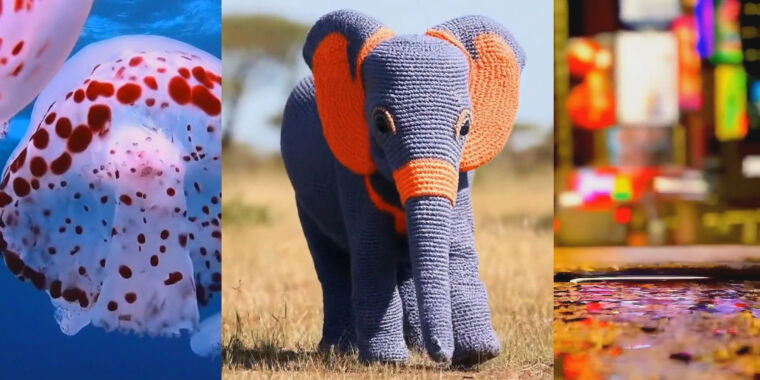On the heels of California passing a bill that bans red dye No. 3 from being sold in the state, legislators have introduced another bill targeting different food additives. An advancing bill called A.B. 2316 aims to remove red dye 40, along with five other food dyes and titanium dioxide, from food provided at schools in the state. The bill was written by Assembly member Jesse Gabriel, who authored the California Food Safety Act that banned red dye No. 3 in the state. Gabriel tells Yahoo Life that the inspiration for the latest bill came while he was working on the California Food Safety Act. “We heard from parents across the country, asking us to do something about these dyes,” he says, noting that yellow dye No. 5, yellow dye No. 6, blue dye No. 1, blue dye No. 2 and green dye No. 3 are under fire as well.
Gabriel says he “grew up struggling with ADHD,” and that one of his sons has the condition too. “A lot of the science around these chemicals says that it can impact all children, but it can be particularly challenging for kids with ADHD,” he says. “It’s crazy that we would have young people in our schools who are getting therapy to deal with their challenges and then at lunch, we’re serving them food with chemicals that are undoing all of that good work.”
But what foods are these dyes found in, and how concerning is this overall? Experts break it down.
What foods are these dyes commonly found in?
The dyes being targeted can show up in a range of foods. “These dyes are often found in many foods marketed to kids, such as candy, breakfast cereals, baked goods, ice cream and sports drinks,” Gianfranco Cesareo, a law fellow specializing in food safety at the Environmental Working Group, tells Yahoo Life. “However, they can also be present in less obvious products, like canned fruit and pickles.”
A few big-name products that contain these dyes include:
“These dyes are in all sorts of foods,” Jamie Alan, an associate professor of pharmacology and toxicology at Michigan State University, tells Yahoo Life. “Usually you will find them in processed foods.”
What does the research say?
Research findings on the dyes have been mixed, but there is a link between these food dyes and behavioral issues in some kids. A 2021 report conducted by the California Office of Environmental Health Hazard Assessment and published in 2021 analyzed data from human and animal studies and found that synthetic food dyes are associated with hyperactivity and poor neurobehavioral outcomes in children, although there is a range of how sensitive kids are to these dyes.
Those studies included “challenge studies,” In which kids were on a dye-free diet for several weeks and then given food or drinks with dyes added. The researchers found that some children were more likely to act out after having foods with the dyes. Sixteen of the 25 studies analyzed had some kind of positive association between the dyes and poor behavior in kids, while the link was “statistically significant” in 52% of the studies.
It’s important to point out that these food dyes and additives are approved by the Food and Drug Administration (FDA) and meet acceptable daily intake levels for synthetic food dyes. But Gabriel stresses that those approvals are based on studies that are up to 70 years old. “Seventy years ago, we had a very different idea of science,” he says.
Gabriel says that some of these food dyes are restricted or banned in Europe. For example, titanium dioxide, which is commonly used in salad dressings and coffee cream, was banned by the European Food Safety Authority over potential connections to cancer. Gabriel adds that “others require a warning label on the package that says the dyes in these products can cause harm to young people. Because the manufacturers don’t want that warning on their product, we have one box of Froot Loops from America and another in Canada, where they’re already making these foods without these dyes. It’s a minor modification.”
Alan says that there is “quite a bit of debate” on this topic. “Some of these dyes have been linked to hyperactivity and exacerbation of ADHD,” she says. “There are also concerns for cancer and birth defects, although the evidence is less convincing here.” Overall, she says, more research is needed in this area.
What happens if the bill passes?
If the bill passes, it will only apply to food served in schools. “Schools would no longer be able to offer foods with these dyes during the school day,” Cesareo says. “There are many other options that schools can choose to offer that do not have any of these dyes in them.”
Manufacturers will have the option of reformulating their products if they want to continue selling foods with these dyes to schools, he says. “Many of these brands do already make safer, naturally colored versions of their products that are available in other countries,” Cesareo adds. Natural dyes, like spirulina for a blue color and beet juice for red, are usually easy substitutes, Alan notes.
If you live in California and want to keep buying foods with red dye No. 40, Gabriel says you’d be just fine to keep doing that. “Everyone will be able to buy all the products they love in the supermarket,” he says. The bill “just says that we serve a couple million free lunches every day in the state of California, and the food that the school districts are serving need to be free of these dyes.”
Ultimately, Gabriel says he hopes all the scrutiny on food dyes in California will influence the rest of the country, too. “We will hopefully spur the FDA to pick up their game to bring us up to the same level of protection as other areas of the world. The U.S. is a global outlier in food safety,” he says. Gabriel says that food manufacturers seem to understand that the need to switch to more natural food dyes is “inevitable.” He adds, “We just want to accelerate the process.”

Olivia Martin celebrates the art of living well in her lifestyle articles. She explores topics ranging from travel and fashion to home decor and culinary delights, offering inspiration for readers seeking a balanced and enjoyable lifestyle.






